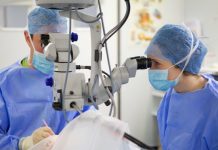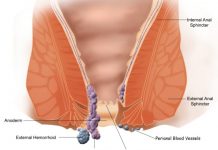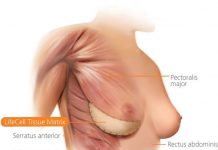A cholecystectomy is a surgical procedure that removes the gallbladder.
The gallbladder is a small hollow organ of the body and it aids in digestion.
It may need to be removed when all other attempts to cure repeated attacks of gallstones have been tried, but failed to achieve a permanent solution.
Gallstones are crystalline in nature and actually look remarkably like little stones. They can range in size from the size of a grain of sand to that of a golf ball, and cause severe abdominal pain.
There have been recent developments in treating gallstones without surgery, but a cholecystectomy is still the most common treatment, with more than 500,000 Americans having the surgery every year.
Non-surgical treatment of gallstones includes medication to dissolve them and ultrasound to shatter them, but these may not be successful or feasible.
Recovery from the surgery
How quickly you recover from your gallbladder surgery will largely depend on the type of procedure your surgeon performs on you. The traditional method is open cholecystectomy, which is a major abdominal operation.
You will have a 4 – 7 inch incision which keeps you in hospital for maybe five days and the recovery time is several weeks to allow the abdominal muscles to heal. You will need to allow possibly six weeks off work, during which time you may not be able to drive a car or do any heavy lifting.
These days, many gallbladder operations are done using the laparoscopic cholecystectomy method; it has largely replaced the open surgery method.
A laparoscope is a thin tube with a camera on the end that projects an image onto a television screen and allows the surgeon to see inside the abdominal cavity. In this procedure, only small incisions are required and the abdominal muscle doesn’t need to be cut.
The obvious benefits of laparoscopic surgery are the shorter hospital stay (probably only overnight) and recovery time. You will experience less pain and be able to return to work much sooner than if you had an open cholecystectomy.
There has been an advanced technique for laparoscopic surgery developed recently, in which only one incision is required and this is made in the belly button, and so there is no obvious scarring.
What are the risks or complications?
As with any surgical procedure, there are risks of infections and adhesions. A significant risk, for 5% – 40% of patients, is called postcholecystectomy syndrome and causes persistent pain in the abdomen.
Chronic diarrhea is another common post-operative condition for about 20% of people, but it does tend to lessen after a time. A less common complication is bile duct injury.
After you have had a cholecystectomy, you will need to take bile acid supplements to aid in the digestion of fats in your diet. This problem will be reduced if you choose a healthy nutritious diet with lots of fresh fruits and vegetables and lean protein.
Limit your intake of high fat and fast foods, sugary foods and drinks and you will enjoy good health and well-being.













